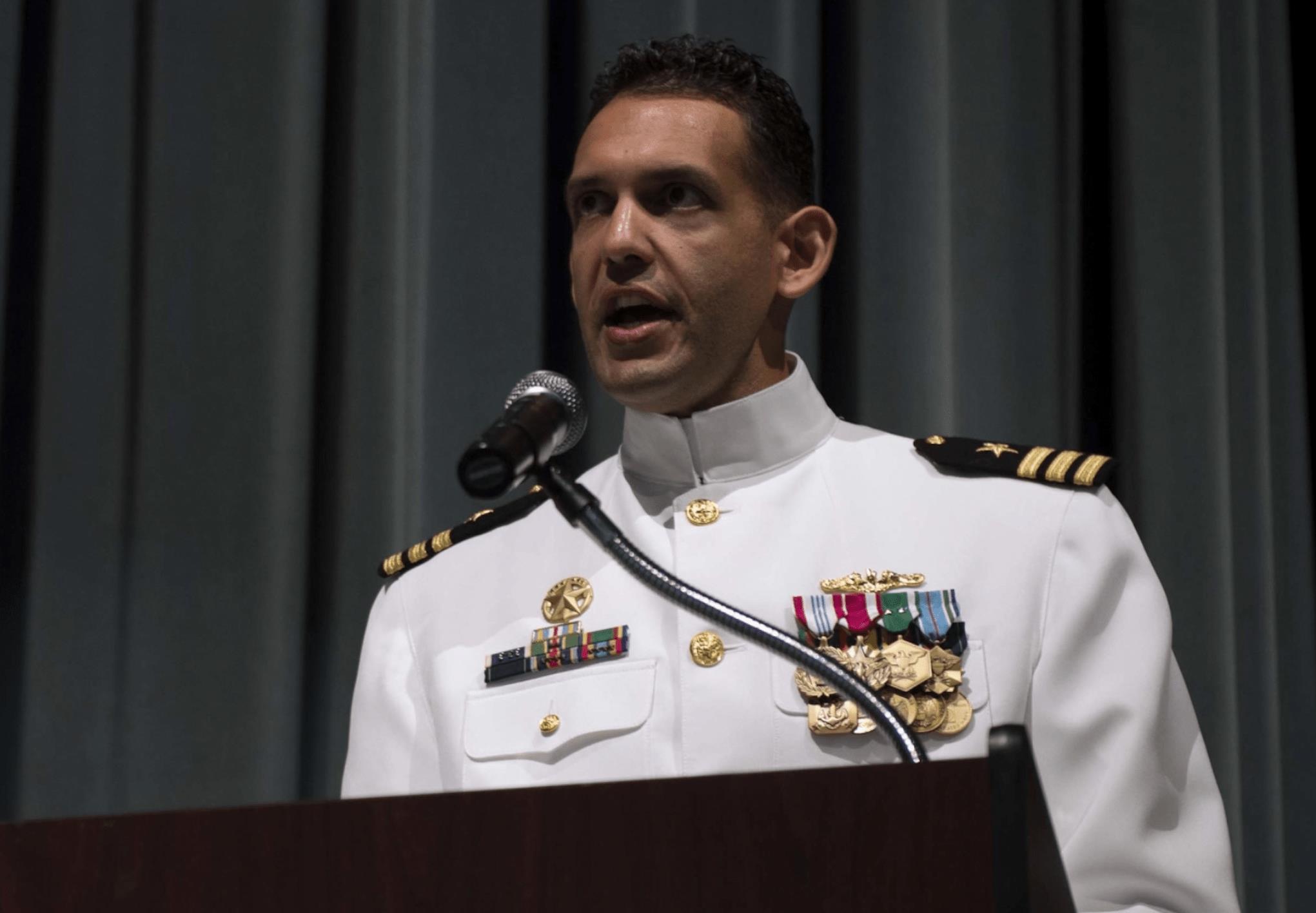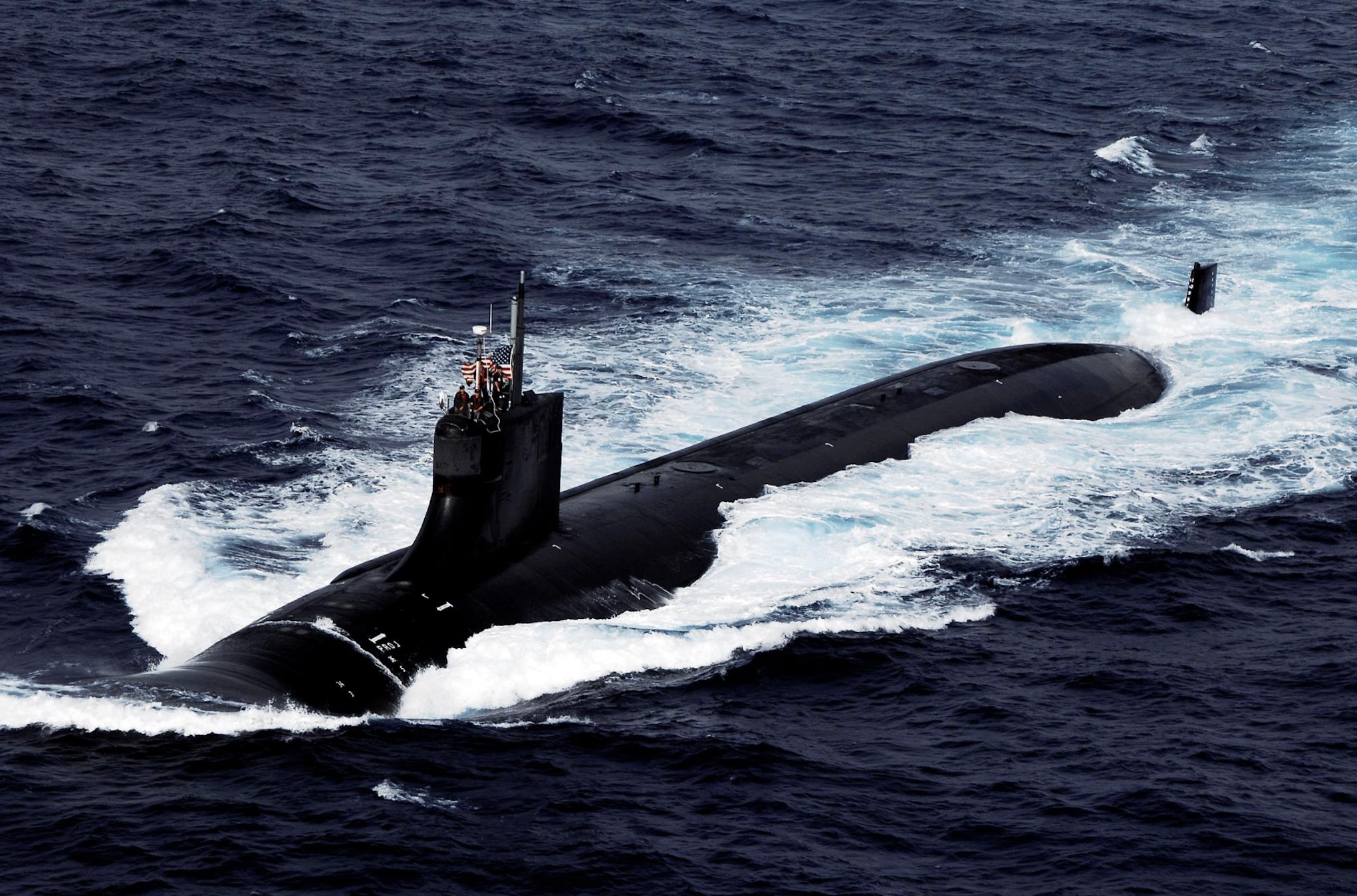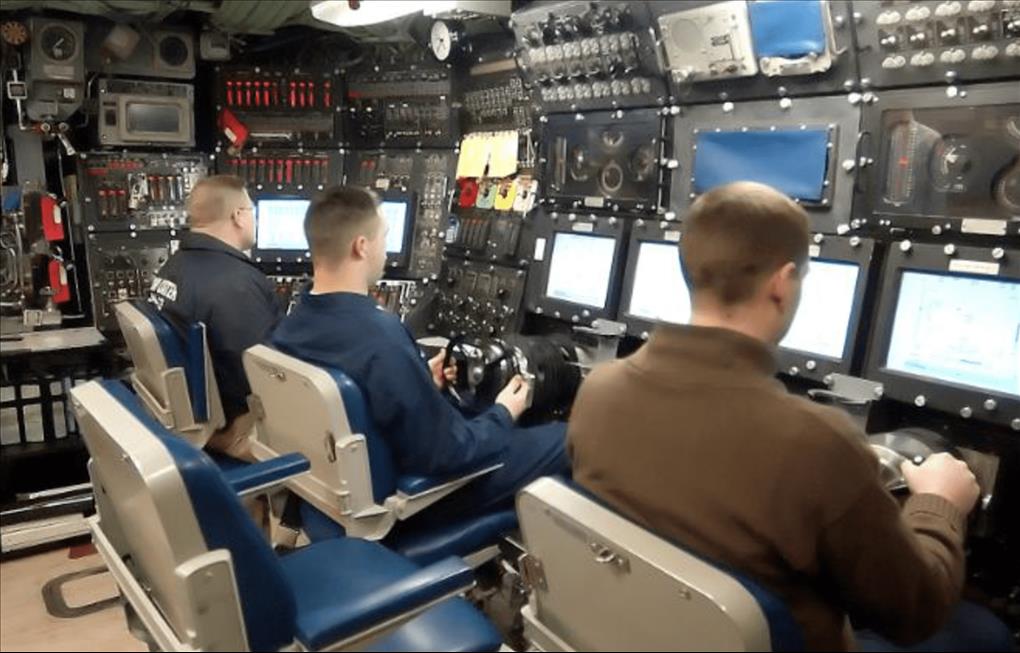
US Navy sacks three over nuclear sub mishap
(MENAFN- Asia Times) With the very real possibility that nuclear attack submarine USS Connecticut — which cost approximately US$3 billion to build — may be retired due to damage from hitting an undersea object, somebody had to pay the price.
Say goodnight to three naval careers.
According to ABC News , the US Navy has fired the top three leaders who were aboard the attack sub when it struck an uncharted sea mountain in the Pacific Ocean in early October.
Vice Adm. Karl Thomas, commander of the Navy's Seventh Fleet, relieved the commanding officer of the submarine, Cmdr. Cameron Aljilani, the executive officer, Lt. Cmdr. Patrick Cashin, and the top enlisted sailor, Master Chief Sonar Technician Cory Rodgers.
The reliefs are“due to loss of confidence. Thomas determined sound judgement, prudent decision-making, and adherence to required procedures in navigation planning, watch team execution and risk management could have prevented the incident,” reads a statement from the Navy.
“Capt. John Witte will assume duties as interim Commanding Officer. Cmdr. Joe Sammur will assume duties as interim Executive Officer. Command Master Chief Paul Walters will assume duties as interim Chief of the Boat.”
At the time of the incident, the submarine was transiting through an area of the South China Sea, according to a US official.
Though the vessel struck an uncharted sea mountain, Vice Adm. Thomas determined the incident could have been prevented.
Despite its high cost and sophisticated tech, the sub did not exercise as much caution as necessary and was traveling faster than it should have in an area that is not as well charted as others, he said.
The submarine remains in Guam before it makes its way to Bremerton, Washington, for repairs to the hull and interior.
According to Forbes , at a minimum, the USS Connecticut will be out of service for years, and there is a creeping realization that the damage may be significant enough to force its premature retirement.

Cmdr. Cameron Aljilani, from Anaheim, Calif., speaks during a change of command ceremony for the Seawolf-class fast-attack submarine USS Connecticut (SSN-22) held at the U.S. Naval Undersea Museum, Keyport, Washington. US Navy Photo.
Earlier this week, the Chinese foreign ministry renewed calls for the US to disclose additional details about the incident, USNI News reported.
The US“has yet to give clear answers to questions like the intention of the operation, the exact location of the incident, whether it lies in the exclusive economic zone or territorial sea of any country, and whether the collision led to a nuclear leak or polluted the marine environment, all causing great concern and doubt,” Chinese foreign ministry spokesman Wang Wenbin said on Tuesday.
“We once again urge the US to give a detailed description of the incident and fully address regional countries' concern and doubt.”
The Navy has yet to publicly explain how or why the USS Connecticut, a Seawolf-class submarine, struck a seamount, or underwater mountain, or to reveal the extent of damage to the vessel, Military.com reported.
On Oct. 2, the Seawolf-class sub struck an unknown object while underwater, but the Navy did not publicly disclose the incident until after the vessel was close to arriving at the naval base in Guam.
A Navy official said at the time that two sailors had suffered moderate injuries and were treated aboard the vessel. Other sailors suffered bumps, bruises and lacerations. There was no damage to the submarine's nuclear reactor.
Last week, a Navy investigation into the incident determined that the submarine had struck an uncharted sea mountain.
The Navy doesn't give exact figures in publicizing the abilities of its submarine, but experts say the Seawolf-class is exceptional.
“These subs have some of the most advanced — in fact the most advanced — underwater capabilities in the business,” said Alessio Patalano, professor of war and strategy at King's College in London.
The Navy says it is“exceptionally quiet, fast, well-armed, and equipped with advanced sensors.”

The fast-attack submarine USS Connecticut (SSN 22) transits ahead of American and Japan Self-Defense Forces (JMSDF) ships at the end of ANNUALEX 19G, the maritime component of the U.S.-Japan exercise Keen Sword '08. Credit: US Navy photo.
The undersea environment is unforgiving and even small mistakes can have huge consequences, CNN World reported.
“Submarining is hard, it's really hard. Not everything goes right all the time,” said Thomas Shugart, who spent more than 11 years on US submarines, including commanding an attack sub.
Surface ships or a sub operating at periscope depth can relay on global positioning satellites to give sailors a very accurate location, said Shugart, now an adjunct senior fellow at the Center for a New American Security.
But at depth, the GPS systems are not available. Submariners use their compasses and charts.
Accurate charts (with a resolution of 328 feet or 100 meters) of the sea bottom are compiled by sending surface ships over an area and bathing the bottom in sound waves — a method called multi-beam sonar.
But the process is expensive and time consuming, leaving as much as 80% of Earth's seafloor unmapped.
In the busy South China Sea, through which a third of the world's maritime trade passes and where China has been building and militarily fortifying man-made islands, less than 50% of the sea bottom has been mapped, David Sandwell, a professor of geophysics at Scripps Institution of Oceanography in California, told CNN.
“It's not surprising that you could run into something,” he said.
Officially, the Navy says Seawolf-class subs have a maximum depth of more than 243 meters (800 feet), although some experts put their maximum depth around double that.
Submarines do have their own sonar, but using it comes at a price — loss of stealthiness.
Those sonar pings — so ubiquitous in submarine movies — also give away the sub's position to opposing forces.
“Sonar is your only way to look at the bottom, but you don't want to put out more sound than you have to,” Shugart said.
“You'd have to do that about every 20 seconds or so,” to get an accurate picture, Sandwell said.“It makes a lot of noise.”
When it comes to knowing the terrain beneath them, even astronauts might have it easier than submariners, according to Shugart.
“Basically, the surface of the moon is better charted than the bottom of the ocean is,” he said.
Sources: ABC News, USNI News, Military.com, Forbes, CNN World

Legal Disclaimer:
MENAFN provides the
information “as is” without warranty of any kind. We do not accept
any responsibility or liability for the accuracy, content, images,
videos, licenses, completeness, legality, or reliability of the information
contained in this article. If you have any complaints or copyright
issues related to this article, kindly contact the provider above.
Most popular stories
Market Research

- Financewire And Tipranks Partner To Redefine Financial News Distribution
- Ethereum-Based Defi Crypto Mutuum Finance (MUTM) Reaches 50% Completion In Phase 6
- Stonehaven Circle Marks 13Th Anniversary With Hadrian Colwyn Leading Calvio Ailegacyx Innovation
- Citadel Launches Suiball, The First Sui-Native Hardware Wallet
- Motif AI Enters Phase Two Of Its Growth Cycle
- Dubai At The Centre Of Global Finance: Forex Expo 2025 Redefines The Trading Landscape



















Comments
No comment